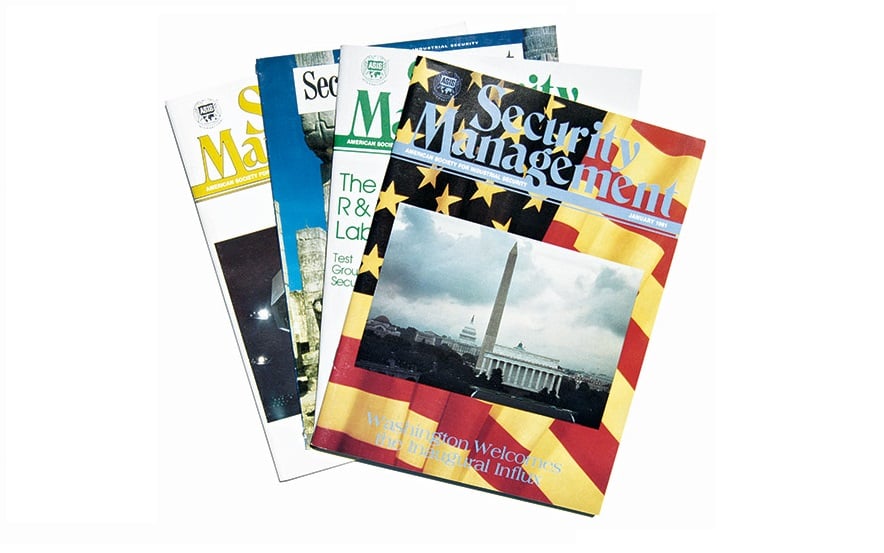60 Years: The Secrets of Security Management
?In 1965, American Society for Industrial Security President Timothy Walsh said that he hoped the Society�s magazine, Industrial Security, would someday surpass 100 pages in one issue. Little did he know how far his wish would be surpassed. Twenty-one years later, in September 1986, the magazine exceeded 250 pages, with 100 pages of advertising. It was a high-water mark�and one not sustainable year-round�but in the decades that followed, the magazine regularly exceeded 100 pages�sometimes significantly so.
During the 1960s, Industrial Security was issued bimonthly to members and had been made available to outside subscribers at the price of $3 per year. By 1969, about 1,800 subscribers received the publication in addition to members. However encouraging this was, it came at a time when ASIS finances were lean. The increase in circulation also meant increases in printing, paper stock, and postage costs. There was some discussion of whether ASIS should continue in this publishing venture because its value had not been measured.
A two-year study was begun in 1970 that would ultimately conclude that the magazine was indeed beneficial to the professionalization of the security industry. With that question settled, to cuts costs, in 1972, the Society outsourced the magazine�s production and advertising sales but retained editorial control. When the magazine debuted it had the name it�s kept ever since: Security Management. The 48-page issue included nine feature articles and 11 columns, including a new products section. Twenty advertisers appeared in the issue.
By 1974, production of the magazine had been brought back in house and a new column had been added to showcase the Society�s activities called �ASIS Dynamics.� The next year, that column was spun off as its own publication of the same name, which continues to this day. In addition, ASIS Dynamics has spawned regional membership newsletters for Europe, the Middle East, and the Asia-Pacific regions.
The coming years proved pivotal for Security Management. In 1977, The North American Publishing Company tried to acquire the publication, but the ASIS Board of Directors declined. In fact, it was decided that a monthly magazine would increase advertising revenue, as well as better serve the membership, offering them the chance to see their expertise recognized and their work professionally published.
In the 1980s, Security Management featured a wide variety of industry topics and news, including technical articles on audio alarm systems, voice analyzers, electronic article surveillance, and locks. There was a column called �Can You Help a Reader?�, in which members posed questions to colleagues, as well as �Media Monitor,� which looked at other media coverage of security, and �An Ounce of Prevention,� which focused on crime prevention. One column familiar to readers today, �Legal Reporter� (now �Legal Report,�) was compiled by ASIS member August Bequai. The magazine received numerous awards for editorial content and graphic design.
For a time, selections from Security Management were translated into Spanish and distributed to members in Spanish-speaking nations. Reprint volumes were also compiled�there were more than 20 as the decade drew to an end�as well as five volumes of Readings from Security Management published by Butterworth. The reprint series continued in the 1990s, and the magazine was redesigned and its editorial staff became increasingly drawn from the world of professional journalism. As the caliber of articles and columns continued to improve, the use of leading illustrators made the magazine more and more visually appealing.�
For editorial staff who were on the Security Management masthead on September 11, 2001, the 2000s were a blur of activity. The aftermath of the terrorist attack left an industry scrambling to protect its people, facilities, and assets. New columns were added to help: �Tech Talk� looked at technology and software, �Case Study� focused on the solutions implemented by individual organizations, �News and Trends� covered the cutting edge, and �Homeland Security� focused on the post-9-11 world.
Today, Security Management has once again been transformed. Its style and content reflect the 2010s. Podcasts, an app for reading the magazine on digital devices, and a website with news, exclusive editorial, and videos have kept Security Management at the top of its game and facing the coming 2020s in good stead.?
